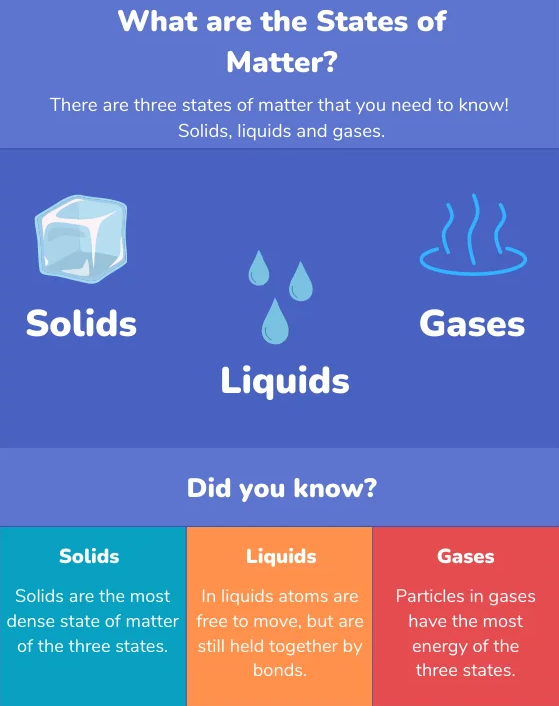State symbols are often used when dealing with acids and alkalis because the reactions can cause changes in state. For example, when we react metal oxides with acids we get the following general reaction:
metal oxide + acid → salt + water
These are known as neutralisation reactions because the acid is neutralised, making water. Look at the following reaction between magnesium oxide and sulfuric acid. Note the change in state from solid and aqueous to aqueous and liquid.
MgO(s) + H₂SO₄(aq) → MgSO₄(aq) + H₂O(l)
Water is always given the state symbol (l) when a reaction takes place at room temperature.
The reaction temperature determines the state and so the following rules will help you to understand which state symbols to use:
- When the reaction temperature is below the melting point, the substance is a solid.
- When the reaction temperature is above the boiling point, the substance is a gas.
- When the reaction temperature is between the melting and boiling points, the substance is a liquid.
Take a look at our quizzes on Acids below to find out more about using state symbols and neutralisation reactions.

